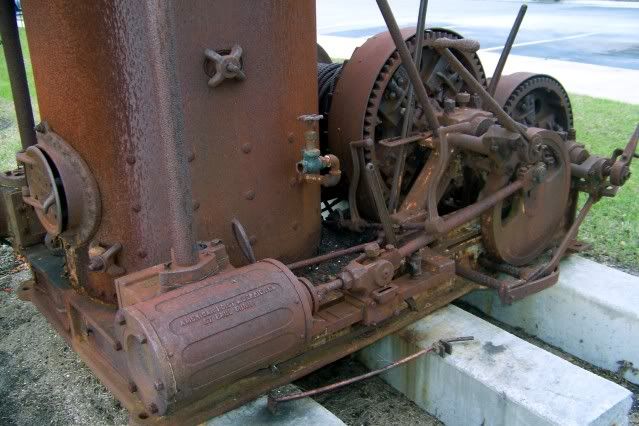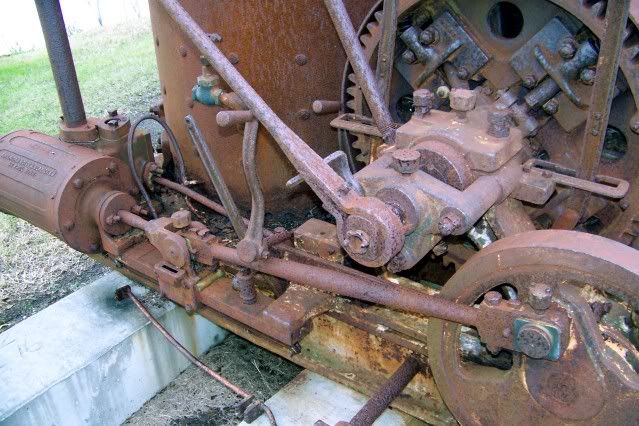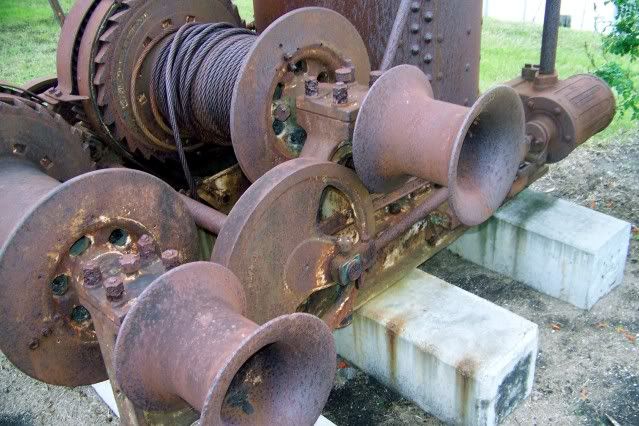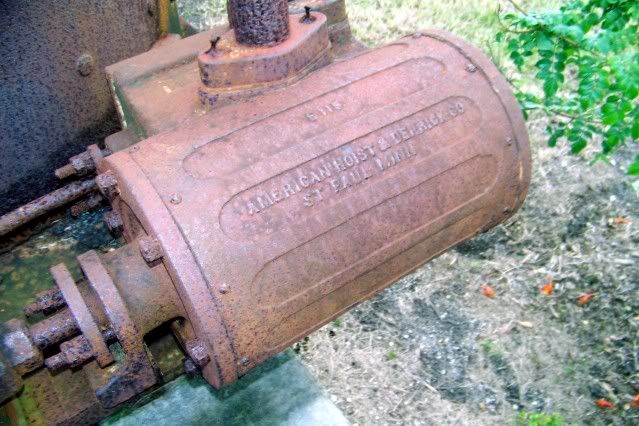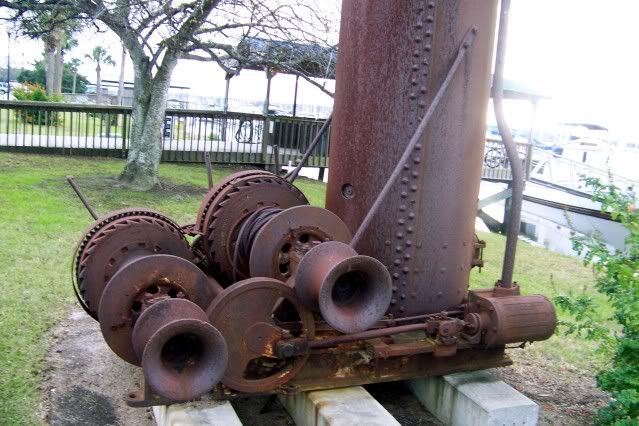Actually, American Hoist & Derrick did make cable operated excavators but this is a steam donkey, twin drum with rope capstans on both.
I moved my boat to a new marina in south Georgia (USA) and this is what greated me at the head of the dock when I arrived. No one here really knows the history of this piece except that it was found when the marina channel was being dredged. There are lots of guesses though. These things were commonly used in the timber industry and is full of pulpwood industry from trees to paper and explosives(TNT). Coastal Georgia is also full of shrimp boats so maybe it was used to handle the trawl gear and nets. May have been used in the shipbuilding industry. Almost every coastal town around here has some kind of ship building history.
From my time in the Pennsylvania Coal fields, I remember something like this used in slope mines called a slusher hoist. No coal mines around here.
Just a piece of disconnected history that seems slightly out of place in a marina but I was tickled to see it and thought you might be too.
Jerry
